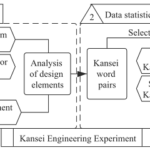The current world is in constant flux, and the public sector is no exception. Citizens increasingly demand efficient, accessible, and transparent services, making innovation the key to addressing these challenges.
Traditionally, the public sector has been known for its resistance to change. However, in recent years, there has been a growing recognition of the importance of innovation in improving the efficiency, effectiveness, and quality of services.
As citizens, we always expect public services to meet minimum standards, and when they fall short, we endure negative experiences. In this way, public innovation, also known as public sector innovation, has become a necessity for public institutions to deliver quality services that contribute to the public good.
Whether you are a researcher or a public official, this article will provide you with some insights into public sector innovation or public administration.
Need for Innovation in Public Administration
Innovation has become a necessity, not only for private businesses or organizations but also for public institutions to meet the needs of society effectively.
Traditionally, the public sector has been characterized as slow, bureaucratic, and resistant to change. However, the demand for more efficient, accessible, and transparent services from citizens is forcing governments to reconsider their ways of working.
An essential element of any innovation ecosystem is the public sector, as it can either facilitate or hinder innovative processes. Innovative public organizations, through laws or services, create an environment that fosters innovation.
Thus, the public sector’s ability to innovate is seen as a critical element in the overall performance of innovation in the economy.
Contrary to the common belief that the public sector is not suitable for innovation, recent research has found that innovation is indeed taking place in the public sector through various avenues (UNECE, 2017).
Drivers of Public Sector Innovation
The primary driver of innovation in public administration is citizens’ demands for higher-quality public services.
Transparency, technological changes, and citizen collaboration have become more prominent, increasing the co-production of services and aligning public institutions and users in the pursuit of public value.
The potential benefits of public sector innovation are substantial, presenting an opportunity to adapt administration and services to citizens’ demands with increased effectiveness, efficiency, and transparency (Mairal, 2020).
Additionally, the growing citizen demands for more effective government management coincide with budgetary challenges that compel governments to enhance efficiency. In this new context, governments need to innovate and modernize to adapt to technological changes, budget constraints, and a citizenry with new expectations (Acevedo and Dasser, 2016).
Creating Public Value
Public institutions are oriented toward creating public value, a characteristic that sets them apart from private organizations seeking private value (Chen et al., 2019).
Many researchers embrace the idea that innovation can contribute to improving the quality of public services and enhancing the problem-solving capacity of public institutions within current societal challenges.
Innovation in public policies and services has become a priority on government agendas worldwide (Zurbriggen and González, 2019). Public innovation involves people, ideas, projects, risk, change, and the generation of public value.
Public Sector
Since we are discussing innovation in public management, it is essential to define what we mean by the public sector. Here are two definitions:
Economipedia defines the public sector as “the set of organisms and institutions that are directly or indirectly managed by the State.”
The public sector manages the vast majority of basic public services and acts as a driving force for social welfare policies, educational services, health, and employment (Abril et al., 2013).
In this context, innovation in the public sector becomes an indispensable necessity for generating public value for society as a whole.
What is Public Sector Innovation?
In literature, there are various definitions for public innovation, innovation in public administration, innovation in the public sector, innovation in public management, or innovation in public services. For simplicity in this article, we consider them synonymous.
Here are some definitions of public sector innovation:
De Vries et al. (2015) note that innovation is often linked to reform movements such as new public management, e-government, the shift from government to governance, and more recently, discussions about the government’s role in a “Big Society.”
NovaGob.Lab (2016) states that innovation in the public context involves harnessing internal stimuli (people and organizational environment), external stimuli (society’s demands, citizen collaboration, and other actors), lateral stimuli (benchmarking), and superior stimuli (new socio-political trends, reforms, etc.).
The Ministry of Economy, Development, and Tourism (2016) of the Chilean Government defines innovation in public management as the “process of creating new ideas useful for people, culminating in their implementation in the public sphere and transformation into public value for society. These new ideas translate into new methods, products, or services – or substantial changes to these – aimed at improving the results of a public organization, focusing on citizenship.”
As seen in the preceding definitions, innovation in the public sector incorporates elements like co-creation, involving those in the public ecosystem (civil society, private sector, academia, and the general public) to incorporate collective intelligence into public management.
Moreover, it is essential to highlight concepts like “innovation in public services,” which Chen et al. (2019) define as “the development and implementation of a new idea by a public institution to create or enhance public value within an ecosystem.”
Objectives of Innovation in Public Management
According to the Ministry of Economy, Development, and Tourism of the Chilean Government (2016), there are three main objectives for innovation in the public sector:
- Implementation of policies and initiatives with an internal focus on improving the efficiency of the public sector.
- Establishment of public policies and initiatives with an external focus on improving the goods and services that the State provides to society and the results it generates for citizens, companies, and institutions.
- Implementation of policies and initiatives with a focus on promoting innovation in other sectors (private sector, academic, etc.).
Factors Associated with Innovation in the Public Sector
Mairal (2020) identified factors influencing local public innovation processes, classifying them into:
Starting Factors
- Political leadership.
- Budget reduction.
- Degree of inter-departmental involvement in innovation processes.
- Training of technical staff.
- Perception of process feasibility (technical design based on needs and process coordination methodologies).
Process Factors
- Political commitment and interest (innovation as a political project).
- Perception of a lack of incentives for innovation.
- Interest and motivation of municipal staff.
- Favorable attitudes toward change.
- Existence of a monitoring and follow-up system.
- Degree of knowledge about innovation initiatives and identification as an innovative experience.
- Degree of digital integration.
- Need for support from external professionals.
- Participation in multidisciplinary and multisectoral teams.
Barriers to Public Innovation
NovaGob.Lab, citing Drucker, reports that three reasons act as barriers to innovation in public institutions:
- Public service institutions are budget-based rather than results-oriented. Success is measured by an increase in the budget rather than results.
- Public service entities depend on many components. They are not paid for results. Public service must satisfy everyone. Resistance to change.
- Public institutions tend to consider their mission solely from a moral perspective rather than an economic one.
We can also consider other obstacles such as:
- Resistance to change: Resistance to change by public employees can hinder the implementation of new ideas.
- Lack of leadership: The lack of visionary leadership can prevent innovation from becoming a priority for the government.
Innovation Initiatives in the Public Sector
Leyden (2017) highlights that despite the challenges, the range of entrepreneurial activities in the public sector is extensive. He characterizes public sector ventures as either direct or indirect.
Direct
Direct public sector ventures operate within the public sector environment and manifest in the innovative manipulation of the environment, particularly government spending, management, and service mechanisms.
These include the creation of new goods and services, improvement in the quality of existing goods and services, increased efficiency in the production of government goods and services, and improved management of government processes.
Indirect
Indirect public sector ventures work by altering the economic environment of the private sector to induce desirable behaviors from private sector entrepreneurs.
Examples manifest in innovative changes in the rules of the private sector game (laws, regulations, etc.) focusing on increasing private sector economic growth and stimulating private sector production of public goods and services through innovations such as privatization and social entrepreneurship.
Types of Public Innovation
The document “Lineamientos para una Política de Innovación en el Sector Público” from the Ministry of Economy, Development, and Tourism of the Chilean Government establishes the following types of innovation in public administration:
- Services: introducing a new service or improving the quality of an existing service.
- Service delivery: changes in the ways public services are provided.
- Administrative and/or organizational: changes in organizational structures, management practices, and staff routines.
- Conceptual: development of new visions of the assumptions underlying products, services, processes, and organizational forms.
- Innovation in policies: change in thinking or intention of behavior, modifying public policies, programs, or reforms.
- Systemic: new or improved ways of action among organizations or sources of knowledge.
How to Innovate in Public Services?
Daglio et al. (2015) propose a working structure to help conceptually organize and classify ideas and interrelated concepts along two dimensions: the level of analysis and the thematic element.

The researchers highlight that the working structure is divided into 4 quadrants, representing thematic elements that group organizational attributes influencing innovation in the public sector:
Idea generation and dissemination
Knowledge and learning that allows us to consider topics related to the collection, analysis, and dissemination of information, knowledge development, and learning.
The hypothesis is that data, information, knowledge, and learning are essential for innovation, and how they are managed can either support or hinder innovation.
Empowering the workforce
This is the cultural dimension, how people are motivated within an organization to explore new ideas and experiment with new approaches.
It is also suggested that leadership and how people are selected, rewarded, socialized, and managed impact an organization’s innovative capacity.
Rules and processes
Here, rules and processes are analyzed, including the legal/regulatory framework, budgetary processes and regulations, approval processes, and the opportunities that innovation offers (or hinders).
Organization design
The elements of organization design, particularly how work is structured within and between organizations, can impact innovation in the public sector.
This includes developing innovative spaces and methods to shape teams, eliminate silos, and work in partnership between organizations and even across sectors.
Additionally, the Ministry of Economy, Development, and Tourism (2016) proposes the following guiding principles for innovation in the public sector:
- Citizen-centered
- Promotion of an innovation culture in the public sector
- Co-creation, allowing interaction between different entities
- Prototyping and scaling
- Documentation, measurement, evaluation, and dissemination.
Tools for innovating in the public sector
There are many tools available to implement innovation processes. Lewis et al., (2020) used ‘design thinking’ to rethink policy issues and generate and test new policy solutions, concluding that design thinking, when it intersects with power and politics, faces significant challenges, but opportunities exist for design thinking and policy-making to work better together.
Examples of innovation in the public sector
- E-Government: Implementation of digital platforms to facilitate access to public services. Estonia, a pioneer in digitizing public services, is an example, with online tax filing and electronic voting.
- Smart Cities: Use of technology to improve city management and citizens’ quality of life. Singapore uses artificial intelligence to enhance public transportation efficiency and waste management.
- Open Data: Publishing public data for use by citizens and businesses.
Government or public innovation labs
Government labs have emerged in recent decades under different names: change labs, innovation teams, or innovation labs.
Acevedo and Dassen (2016) emphasize that government innovation labs are dynamic spaces promoting creativity for designing new public policy solutions; these spaces are characterized by the multi-sectoral nature of their members and collaborative problem-solving.
Public innovation labs are injecting much-needed creativity and experimentation into the formulation of public policies and programs, bringing different actors together to explore solutions to complex problems, and to design and test new approaches and solutions.
Innovation Labs in Public Management
According to Zurbriggen and González (2019), labs are conceived as “experimentation islands” where creative methods are used to “change how government works,” involving all stakeholders in the process.
Government Labs bring a disruptive approach to public administration where there is a prevailing aversion to failure, encouraging doing things differently.
There are 5 fundamental challenges for Public Innovation Labs (Acevedo and Dassen, 2016):
- Incorporating external perspectives into government agencies;
- Building internal and external networks within an organization;
- Supporting leadership;
- Providing budgetary flexibility and human capital;
- Managing risk.
OECD Observatory of Public Sector Innovation (OPSI)
The OECD Observatory of Public Sector Innovation (OPSI) is a dynamic platform dedicated to promoting the understanding and implementation of innovation in the public sector. As part of the Organization for Economic Cooperation and Development (OECD), OPSI serves as a global center for sharing knowledge, ideas, and best practices in public sector innovation.
This online resource provides a wealth of information, including case studies, reports, and tools, fostering a collaborative environment where policymakers, professionals, and researchers can explore innovative approaches to addressing complex social challenges. OPSI’s commitment to cultivating a culture of continuous improvement and learning makes it a fundamental resource for those navigating the ever-evolving landscape of public sector innovation.
Bloomberg Cities
Affiliated with Johns Hopkins University, the Bloomberg Cities platform is at the forefront of urban innovation, driving positive transformations in cities worldwide. As an initiative led by Bloomberg Philanthropies, this platform offers a wealth of resources, insights, and impactful initiatives to empower municipal leaders and communities.
Through collaborative efforts and data-driven strategies, Bloomberg Cities works to address pressing urban challenges, promote resilience, and enhance residents’ quality of life. The platform serves as a catalyst for innovation by providing city leaders with tools, knowledge, and a shared space for exchange, ultimately contributing to the creation of more sustainable, equitable, and vibrant urban environments.
Lab.Rio
Lab.Rio is a political innovation laboratory created and linked to the municipality of Rio de Janeiro, with the main objective of developing tools capable of bringing citizens closer to local administration. The main tools developed by Lab.Rio include the City Youth Council, Agora Rio Challenge, Mapeando tool, Chega Junto, and Inmersión projects.
Danish Design Centre
The Danish government’s innovation laboratory, the “Danish Design Centre,” incorporates people-centered design and immersion research techniques, such as user sessions, journals, and ethnographic studies. This approach aims to radically transform the relationship between government and citizens.
The Danish Design Centre collaborates on initiatives for public and private actors in areas such as health, innovation, cities, and more.
Behavioural Insight Team
The British Government’s “Behavioural Insight Team” laboratory aims to undertake experimental approaches to public interventions and policy formulation. This laboratory was one of the pioneers in promoting innovation in public management.
The Government’s Responsibility in Promoting Public Innovation
Clausen et al., (2020) states that “new public sector services and the ways of communicating and distributing these services to the public are crucial for the future development of a well-performing public sector. In this sense, governments have the responsibility to create an environment conducive to innovation. This includes:
- Investing in research and development: Governments must invest in research and development to generate new ideas and solutions.
- Promoting collaboration: Governments should promote collaboration between the public sector, private sector, academia, and civil society.
- Creating a flexible regulatory framework: Governments should create a flexible regulatory framework that does not hinder innovation.
The Impact of Innovation on Citizens’ Quality of Life
Innovation in the public sector can have a positive impact on the quality of life for citizens. Innovation can:
- Improve the quality of public services: Citizens can enjoy more efficient, accessible, and transparent public services.
- Reduce costs: Innovation can help governments reduce costs and improve efficiency.
- Promote economic growth: Innovation can help create new jobs and business opportunities.
- Increased transparency: Technology can help improve the transparency and accountability of public institutions.
- Better outcomes in public policies: The use of data and data analytics can help governments make more informed decisions on public policies, improving citizens’ quality of life.
Conclusions
Public innovation has become a primary need not only due to citizen demand for better public services but also to strengthen innovation ecosystems, ultimately impacting the economy.
Globally, innovation in public management is being driven through “government labs,” spaces that promote co-creation with increased citizen participation.
On the other hand, technology and digitization are fundamental tools for innovation, but visionary leadership, a culture of collaboration, and a flexible regulatory framework are also necessary. Innovation in the public sector can improve citizens’ quality of life, promote economic growth, and create a more sustainable future.
References
Abril A., M. Deza, J. García, M. Gutiérrez, J. Rodríguez y J. Rodríguez. 2013. Introducción a la innovación en la Administración Pública. Visiones para una Administración Pública innovadora. Instituto Nacional de Administración Pública (INAP). 106 p.
Acevedo S. y N. Dassen. 2016. Innovando para una mejor gestión: La contribución de los laboratorios de innovación pública. Banco Interamericano de Desarrollo (BID). Nota Técnica No IDB-TN-1101. 66 p.
Chen, Jiyao & Walker, Richard & Sawhney, Mohanbir. (2019). Public service innovation: a typology. Public Management Review. 22. 1-22. 10.1080/14719037.2019.1645874.
Clausen, T. H., Demircioglu, M. A., & Alsos, G. A. (2020). Intensity of innovation in public sector organizations: The role of push and pull factors. Public Administration, 98(1), 159-176.
Daglio, M.; Gerson D.; Kitchen H. (forthcoming, 2015), ‘Building Organisational Capacity for Public Sector Innovation’, Background Paper prepared for the OECD Conference “Innovating the Public Sector: from Ideas to Impact”, Paris, 12-13 November 2014.
De Vries, Hanna & Bekkers, V. & Tummers, Lars. (2015). Innovation in the Public Sector: A Systematic Review and Future Research Agenda. SSRN Electronic Journal. 10.2139/ssrn.2638618.
FEN Universidad de Chile & Laboratorio de Gobierno. 2018. Experiencias de Innovación Pública. Ediciones CEA-FEN Universidad de Chile. 1o Edición, Santiago de Chile.
Lewis, J. M., McGann, M., & Blomkamp, E. (2020). When design meets power: Design thinking, public sector innovation and the politics of policymaking. Policy & Politics, 48(1), 111-130.
Leyden D. 2017. Chapter 1 – Innovation in the Public Sector. In: UNECE. 2017. Innovation in the Public Sector. Country experiences and Policy Recommendations. United Nations, 179.
Mairal P. 2020. Innovación pública: una propuesta de análisis de los factores que inciden en los procesos de innovación en el sector público local. Cuadernos de Gobierno y Administración Pública ISSN: e-2341-4839https://dx.doi.org/10.5209/cgap.68849
Ministerio de Economía, Fomento y Turismo. 2016. Lineamientos para una Política de Innovación en el Sector Público. 28 p.
NovaGob.Lab. 2016. Innovación Pública Abierta: Ideas, Herramientas y Valores para participar en la mejora de la administración. 52 p.
UNECE. 2017. Innovation in the Public Sector. Country experiences and Policy Recommendations. United Nations, 179.
Zurbriggen, C. and González Lago, M. (2019) An experimental evaluation tool for the Public Innovation Lab of the Uruguayan government, Evidence & Policy, vol 15, no 3, 437–451, DOI: 10.1332/174426419X15537488717501





